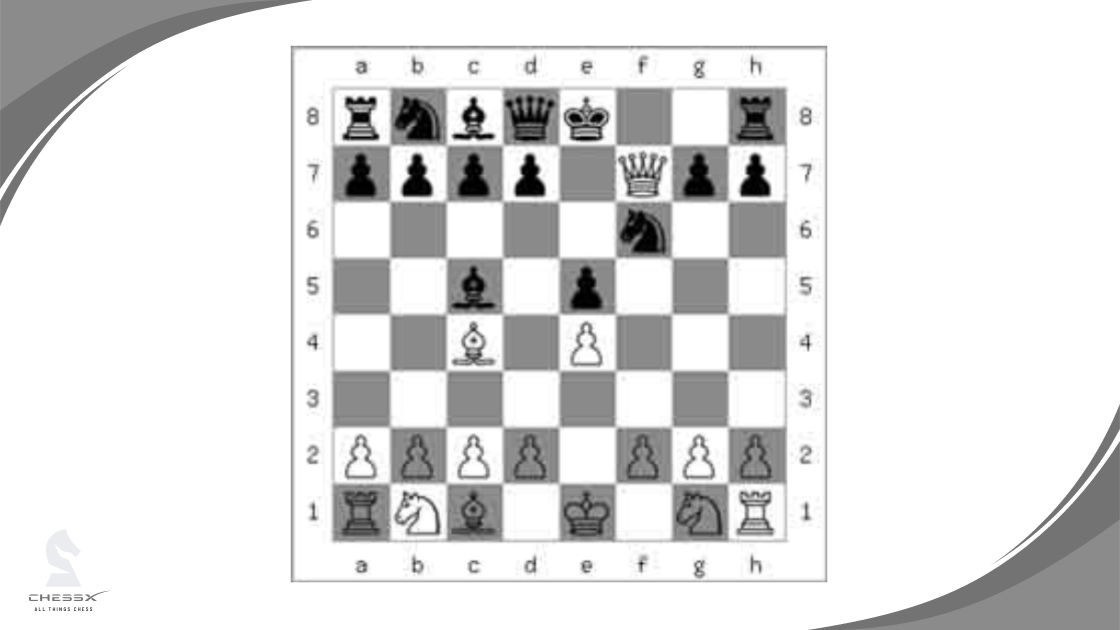Decoding Chess for Beginners: Understanding Quick Checkmate Strategies

In the seventh installment of the Chess for Beginners series, we will introduce you to a few quick checkmate strategies that can help you change the course of the game. We encourage you to read the complete blog to gain the most from this discussion.
Many have experienced defeat within a matter of minutes and pondered, "What just happened here?" In those moments, opponents often employ deceptive tactics, leaving you wondering. One such technique is known as the "fool's mate," capable of trapping your king in just 2 moves.
Therefore, one must avoid falling into these traps. A solid approach is to comprehend various quick game strategies commonly utilized to ensnare novices.
Here are five common strategies that, when understood, can be utilized to swiftly conclude the game or counteract the opponent's scheme.
The Fool's Mate
This is the oldest and most popular quick game strategy that is employed regularly. The fool’s mate allows you to finish the game within 2 moves! Even before your opponent realizes it, you would have finished the game!
1. g4 e5
The game starts with the white pawn (Opponent) moving his pawn from g2 to g4. When this happens, you must over your pawn from e7 to e5. This will allow you to capture one of the center squares and will make your first move.

2. f3 Qh4# 0-1
Next, your opponent will move his pawn from f2 to f3. This will open up the diagonal that leads to the king. Your next move is to move the queen to h4 and the game ends. You will successfully trap your opponent that way.
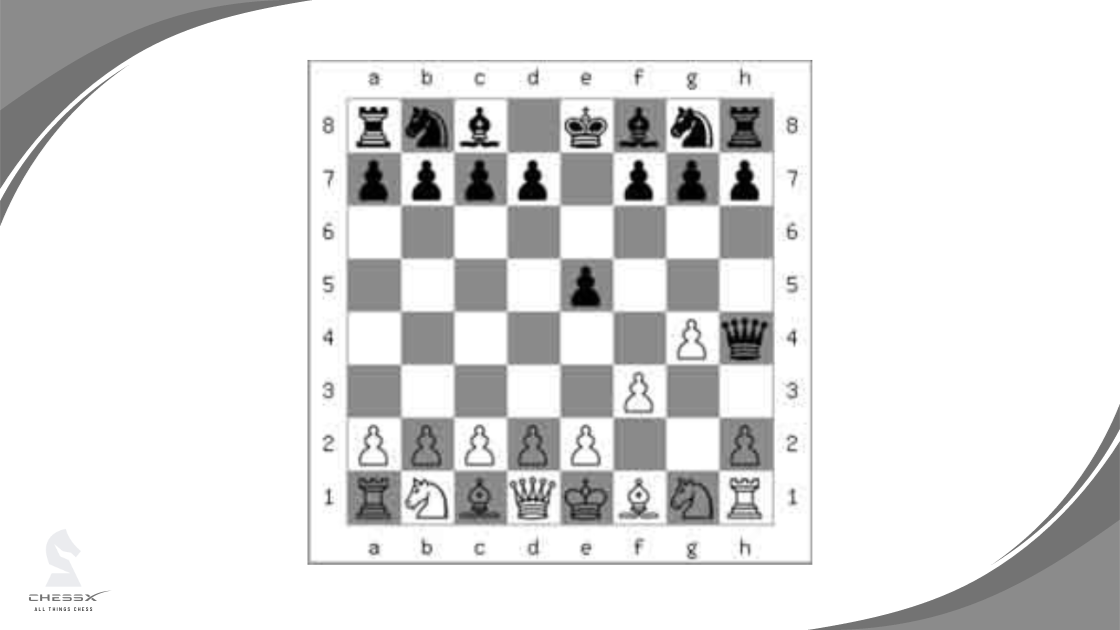
The Smothered Mate (King’s Pawn)
This is a trick where the opponent’s king is taken down in 4 moves. This also capitalizes on the opponent’s king’s inability to escape.
1. e4 e5
The game starts with a white (opponent) moving her pawn from e2 to e4. Black then advances her pawn from e7 to e5.
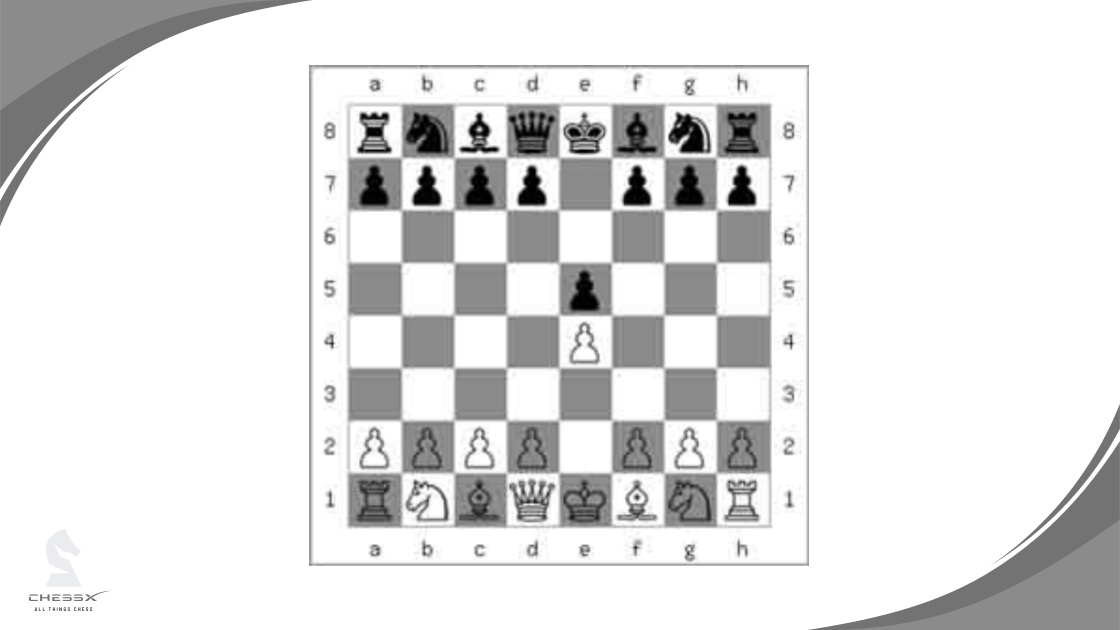
2. Ne2 Nc6
In the next move, white moves her king’s side knight from g1 to e2. In response, black moves her queen’s side knight from b8 to c6.
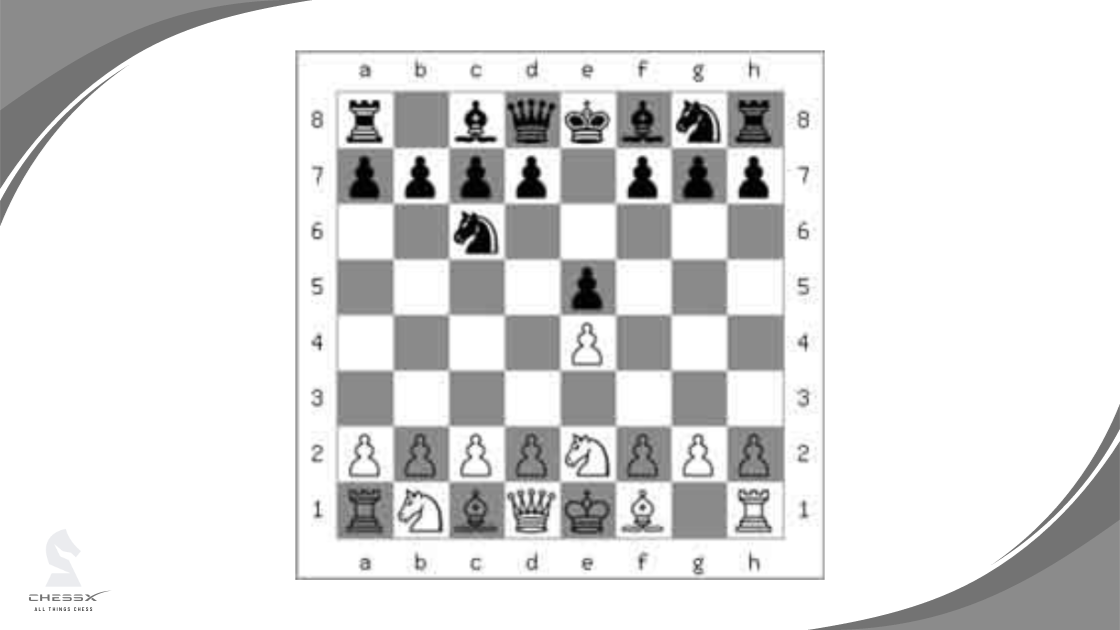
3. Nc3 Nd4
In the third move, white moves the queen’s side knight from b1 to c3. Now, black traps the king by moving the active knight from c6 to d4.

4. g3 Nf3# 0-1
As a last move, the opponent will choose to move the g2 pawn to g3 as a simple game development. This will mean the end of the game as you can move your knight from d4 to f3 and it will capture the king for you.
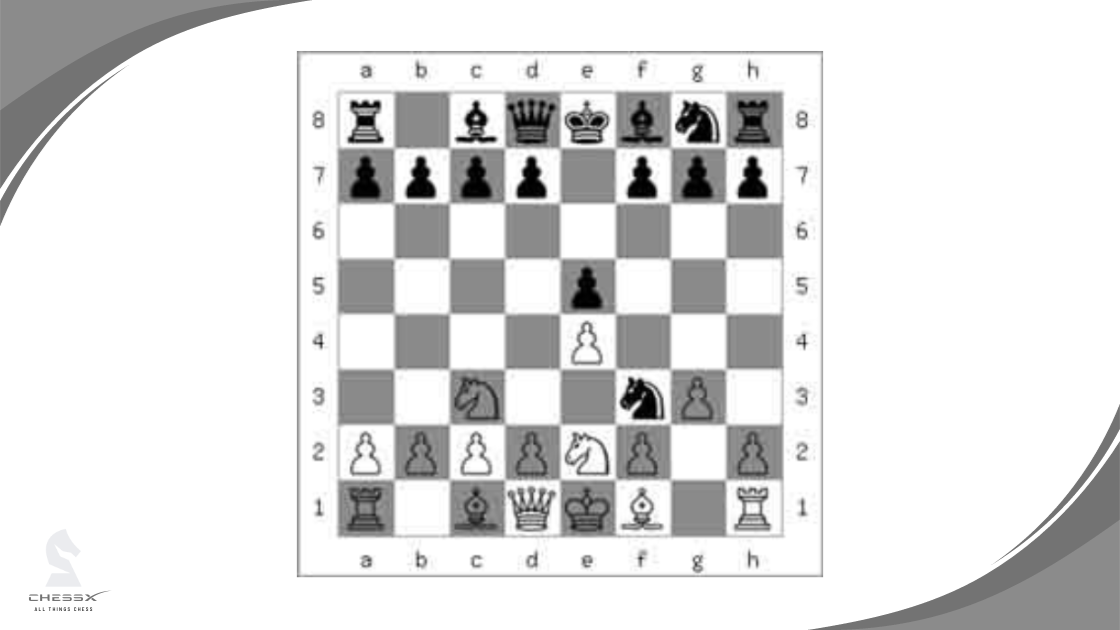
The Scholars Mate
The next game is known as the Scholar’s Mate. This move also makes use of just 4 moves to defeat the opponent.
1. e4 e5
The first move should be the white king’s pawn moving from e2 to e4. Black will do the same and move the king’s pawn from e7 to e5.
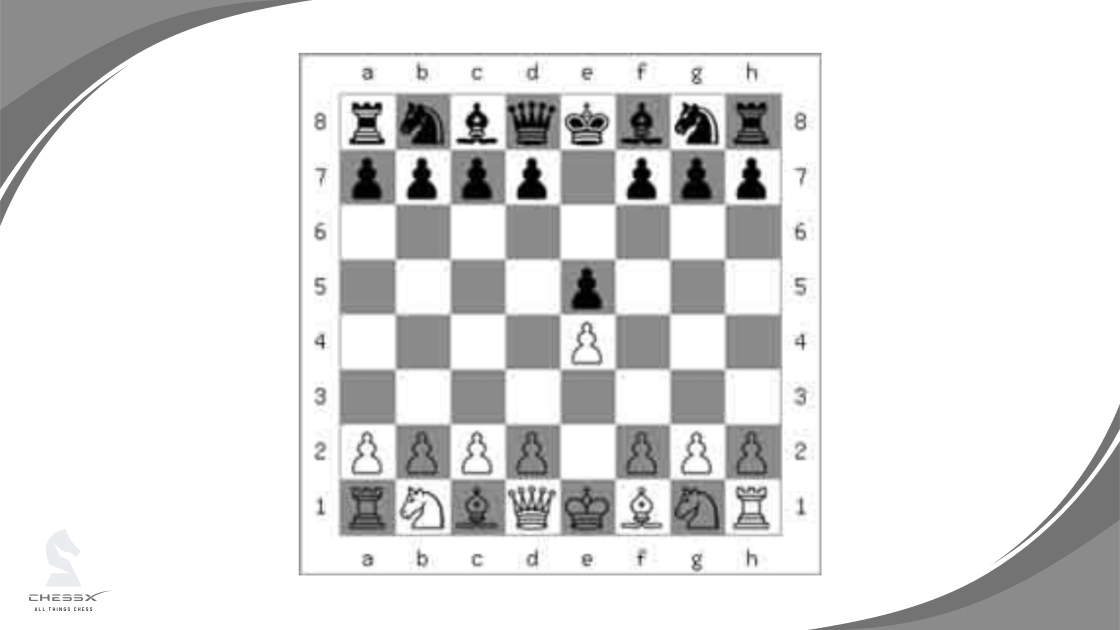
2. Bc4 Bc5
In the next move, the white’s king-side bishop moves from f1 to c4 and the black’s kingside bishop moves from f8 to c5.
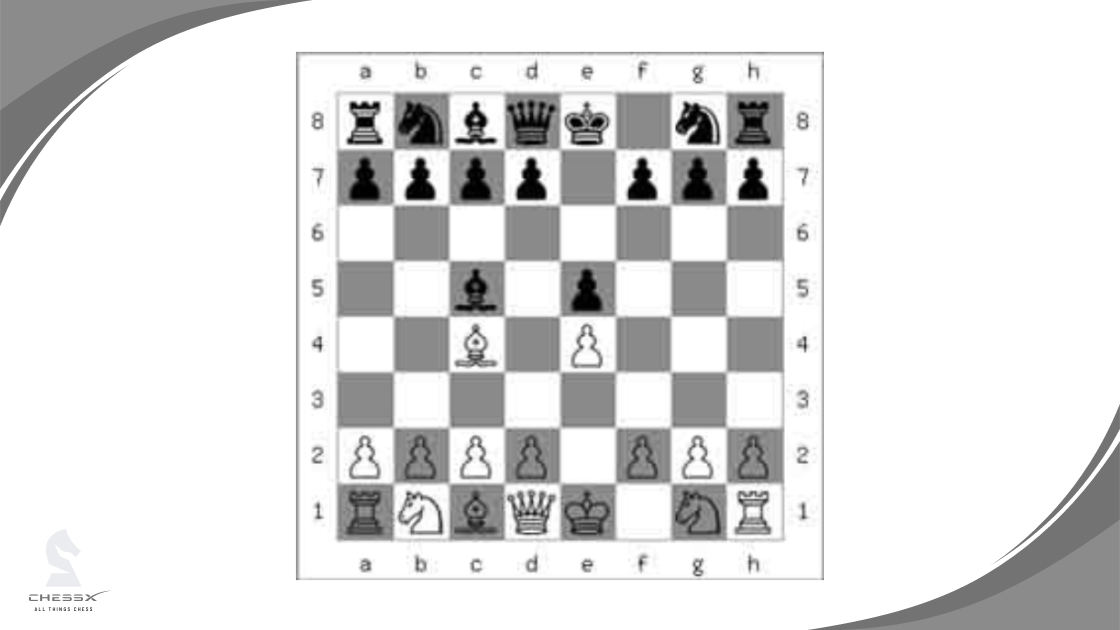
3. Qh5 Nf6
As a third move, the white queen moves from d1 to h5. Black then moves the king’s knight from g8 to f6.
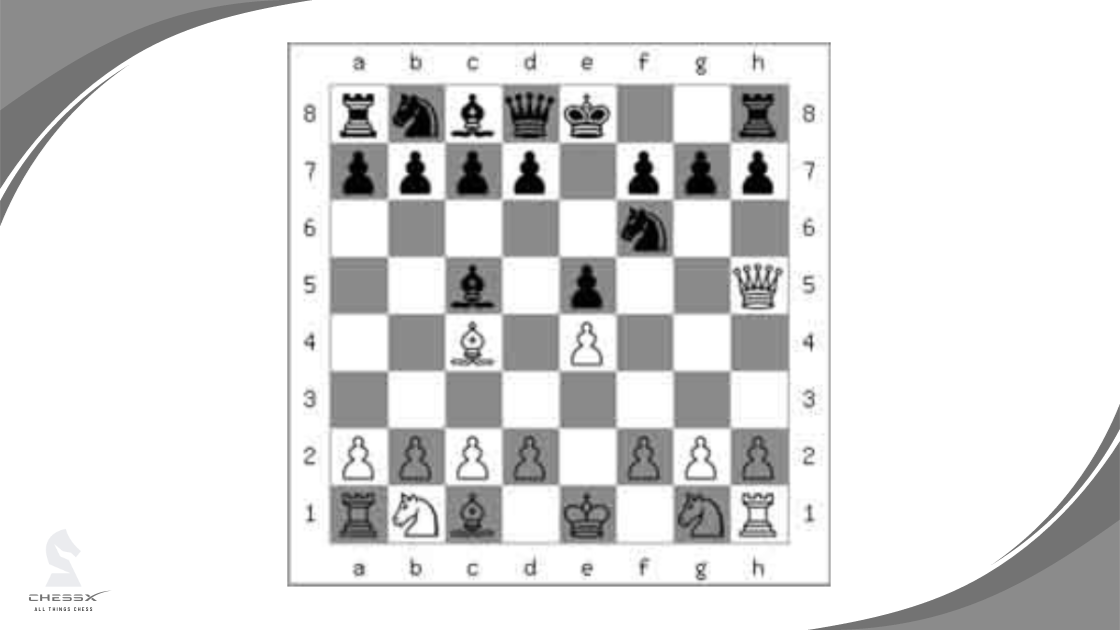
4. Qxf7# 1-0
This proves to be a great lure laid out by white as black tries to attack the queen and pawn. White’s queen then captures black’s f7 pawn and it is now checkmate.
